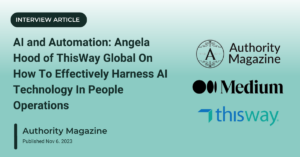The labor market has been volatile for employers over the last few years. To fill empty roles and prepare for an uptick in consumer demand, hasty employment decisions were made to keep business going, leading to a few bad hires.
Some candidates didn’t work out, weren’t satisfactory, or the employee left for another opportunity. Such circumstances have encouraged employers to be more deliberate with their hiring in 2023 and beyond, but there’s one BIG lingering problem…
The pool of skilled and qualified candidates is shrinking. Recruiters often report they can’t find quality candidate profiles—24% of companies listed labor quality as one of their primary concerns of the year.
It’s even worse for employers in industries that require employees with licenses, certifications, and degrees since there are more jobs available that don’t need such credentials.
To find qualified candidates, organizations are shifting their attention toward the quality of their hires, hiring from within, and using HR technology that expands their candidate selection.
Focus On The Quality Of Hire
Focusing on quality rather than someone to solve the organization’s labor problems can generate better results, increase retention, accomplish company goals, and improve the team or department. To land high-quality candidates, hiring managers and recruiters are taking a two-pronged approach:- The Hiring Process It’s essential for recruiters to review their recruitment process to ensure they have the best tools to recruit in today’s job market, an effective hiring process, and the right people are hired for the right positions. Employers are evaluating the company’s job descriptions, applications, interview questions, and follow-up procedures. These elements can significantly affect the number of quality candidates an organization receives.
- The Candidate It’s easy to get caught up in the fluff of a resume. The greatest question is to determine whether the candidate can complete the job at hand. Pay attention to their skills, qualifications, and experience. Ask questions that relate to the role they’re being considered for to gain a more in-depth look at their experience.








